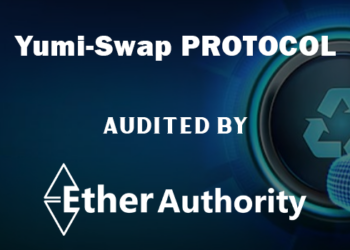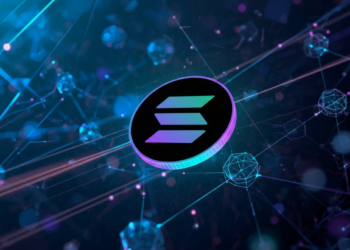In the ever-evolving landscape of digital finance, Web3 wallets have emerged as pivotal tools, enabling users to interact with decentralized applications (dApps), manage digital assets, and engage in blockchain-based activities. This comprehensive guide delves into the evolution of Web3 wallets, examining their features, benefits, and the transformative role they play in the decentralized web.
Understanding Web3 Wallets
A Web3 wallet is a digital tool that allows users to store, manage, and interact with digital assets on blockchain networks. Unlike traditional wallets, which store physical currencies, Web3 wallets manage cryptocurrencies, non-fungible tokens (NFTs), and other digital assets. They also facilitate interactions with dApps, enabling users to participate in decentralized finance (DeFi), governance, and other blockchain-based activities.
The Evolution of Web3 Wallets
1. Early Development: Command-Line Interfaces
The journey of Web3 wallets began with command-line interfaces, such as Bitcoin Core and Ethereum’s Mist wallet. These early wallets were primarily used by developers and enthusiasts to interact with blockchain networks. While they provided essential functionalities, their complex interfaces limited accessibility to a broader audience.
2. Rise of Browser Extensions: MetaMask and Trust Wallet
The introduction of browser extension wallets marked a significant advancement in user experience. MetaMask, one of the most popular Web3 wallets, allowed users to interact with Ethereum-based dApps directly from their browsers. Trust Wallet, another widely used wallet, expanded support to multiple blockchains, enhancing cross-chain compatibility.
3. Mobile Wallets: Accessibility on the Go
With the proliferation of smartphones, mobile wallets became essential for users seeking to manage their digital assets on the go. Wallets like Coinbase Wallet and Argent offered mobile-friendly interfaces, enabling users to access their funds and interact with dApps from their mobile devices .
4. Hardware Wallets: Enhanced Security
As the value of digital assets grew, so did the need for enhanced security. Hardware wallets, such as Ledger and Trezor, emerged as solutions to protect private keys offline. These devices provide an added layer of security by storing private keys in a physical device, making them less susceptible to online threats.
5. Super Apps: Integration of Multiple Services
The latest evolution in Web3 wallets is the transformation into super apps. These platforms integrate various services, including DeFi protocols, NFT marketplaces, and decentralized identity management. Users can manage a wide range of digital assets and activities within a single application, streamlining their Web3 experience.
Key Features of Modern Web3 Wallets
1. Multi-Chain Support
Modern Web3 wallets support multiple blockchain networks, allowing users to manage assets across different ecosystems. This feature enhances interoperability and provides users with greater flexibility in managing their digital assets.
2. Decentralized Identity Management
Web3 wallets are increasingly incorporating decentralized identifiers (DIDs), enabling users to manage their digital identities securely. This feature is crucial for participating in governance, accessing token-gated content, and interacting with various dApps.
3. Built-in DeFi Integration
Many Web3 wallets now offer built-in DeFi features, allowing users to lend, borrow, stake, and yield farm directly within the wallet interface. This integration simplifies access to DeFi platforms and enhances the user experience.
4. NFT Management
With the rise of NFTs, Web3 wallets have incorporated features to manage and display NFTs. Users can view their collections, transfer assets, and interact with NFT marketplaces seamlessly.
5. Enhanced Security Measures
Security remains a top priority in the development of Web3 wallets. Features such as multi-signature authentication, biometric verification, and hardware wallet integration provide users with robust security measures to protect their assets.
Benefits of Using Web3 Wallets
1. Full Control Over Digital Assets
Web3 wallets empower users with full control over their private keys and digital assets. Unlike custodial wallets, where a third party manages the keys, Web3 wallets ensure that users retain ownership and control over their funds.
2. Enhanced Privacy and Security
By utilizing blockchain technology, Web3 wallets offer enhanced privacy and security features. Transactions are recorded on immutable ledgers, reducing the risk of fraud and unauthorized access.
3. Seamless Interaction with dApps
Web3 wallets facilitate seamless interaction with dApps, enabling users to participate in various decentralized activities, such as gaming, governance, and finance, without intermediaries.
4. Participation in Governance
Many Web3 wallets support governance tokens, allowing users to participate in decision-making processes within decentralized organizations. This feature promotes community involvement and decentralized governance.
5. Access to Token-Gated Content
Web3 wallets enable users to access exclusive content and services through token gating. By holding specific tokens, users can unlock premium features, participate in events, and engage with exclusive communities.
Challenges and Considerations
While Web3 wallets offer numerous benefits, users should be aware of potential challenges:
- Complexity: The user interfaces of some Web3 wallets can be complex, posing a barrier for beginners.
- Security Risks: Despite enhanced security features, users must remain vigilant against phishing attacks and malware.
- Regulatory Uncertainty: The evolving regulatory landscape for cryptocurrencies and digital assets may impact the functionality and legality of certain wallet features.
The Future of Web3 Wallets
The future of Web3 wallets is promising, with ongoing developments aimed at enhancing user experience and expanding functionalities. Key trends to watch include:
- Integration with Artificial Intelligence: AI could play a role in automating transactions, providing personalized recommendations, and enhancing security measures.
- Expansion of Real-World Asset Integration: Web3 wallets may increasingly support tokenized real-world assets, bridging the gap between physical and digital economies.
- Improved User Interfaces: Continued focus on user-friendly designs will make Web3 wallets more accessible to a broader audience.
Conclusion
Web3 wallets have undergone significant evolution, transforming from basic tools for managing digital assets to comprehensive platforms facilitating interaction with the decentralized web. As the Web3 ecosystem continues to grow, these wallets will play a crucial role in shaping the future of digital finance and decentralized applications.
FAQs
Q1: What is the difference between a Web3 wallet and a traditional wallet?
A Web3 wallet allows users to manage digital assets on blockchain networks and interact with decentralized applications, whereas a traditional wallet stores physical currencies and is managed by centralized institutions.
Q2: Are Web3 wallets secure?
Web3 wallets incorporate various security features, such as private key management and multi-signature authentication, to protect users’ digital assets. However, users must exercise caution and follow best practices to mitigate risks.
Q3: Can I use a Web3 wallet for NFTs?
Yes, many Web3 wallets support the storage, management, and transfer of NFTs, allowing users to engage with NFT marketplaces and display their collections.
Q4: Do I need technical knowledge to use a Web3 wallet?
While some Web3 wallets offer advanced features requiring technical knowledge, many have user-friendly interfaces designed for beginners, making it easier for anyone to get started.
Q5: Will Web3 wallets replace traditional banks?
Web3 wallets offer an alternative to traditional banking by providing decentralized financial services. However, they currently coexist with traditional financial institutions, and their adoption depends on individual preferences and regulatory developments.
Join Us : Twitter | Website | GitHub | Telegram | Facebook | YouTube























